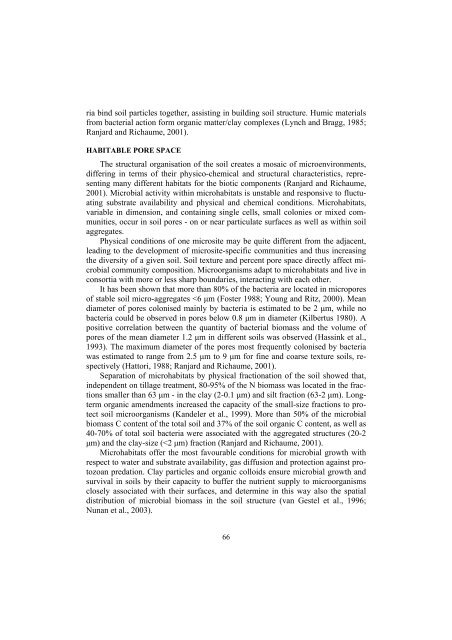soil - Lublin
soil - Lublin
soil - Lublin
You also want an ePaper? Increase the reach of your titles
YUMPU automatically turns print PDFs into web optimized ePapers that Google loves.
ia bind <strong>soil</strong> particles together, assisting in building <strong>soil</strong> structure. Humic materials<br />
from bacterial action form organic matter/clay complexes (Lynch and Bragg, 1985;<br />
Ranjard and Richaume, 2001).<br />
HABITABLE PORE SPACE<br />
The structural organisation of the <strong>soil</strong> creates a mosaic of microenvironments,<br />
differing in terms of their physico-chemical and structural characteristics, representing<br />
many different habitats for the biotic components (Ranjard and Richaume,<br />
2001). Microbial activity within microhabitats is unstable and responsive to fluctuating<br />
substrate availability and physical and chemical conditions. Microhabitats,<br />
variable in dimension, and containing single cells, small colonies or mixed communities,<br />
occur in <strong>soil</strong> pores - on or near particulate surfaces as well as within <strong>soil</strong><br />
aggregates.<br />
Physical conditions of one microsite may be quite different from the adjacent,<br />
leading to the development of microsite-specific communities and thus increasing<br />
the diversity of a given <strong>soil</strong>. Soil texture and percent pore space directly affect microbial<br />
community composition. Microorganisms adapt to microhabitats and live in<br />
consortia with more or less sharp boundaries, interacting with each other.<br />
It has been shown that more than 80% of the bacteria are located in micropores<br />
of stable <strong>soil</strong> micro-aggregates

















